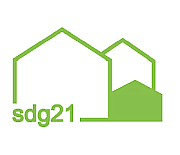In the run-up to the UN World Human Settlements Summit Habitat III, the German Advisory Council on Global Change (WBGU) points to the major challenges posed by increasing urbanisation. In its report "The Relocation of Humanity: The Transformative Power of Cities", the WBGU emphasises that a brief window of opportunity will open up in the coming decades of urbanisation "to set the course towards sustainability" - see Printed matter 18/9590. In this context, the Council recommends shortening the Habitat conference cycle from 20 to four years. The upcoming Habitat conference will take place from 17 to 20 October in Ecuador. The topic of "urbanisation and transformation" should also become a permanent item on the G20 agenda.
"The report is impressive in view of its wealth of arguments and diverse examples of urbanisation phenomena and the description of their effects. The Association of German Cities feels - not least due to its contributions to the success of the HABITAT III conference in Quito in October 2016 - in complete agreement with the report regarding the central role of cities in mastering the upcoming transformation challenges and utilising their opportunities. The challenges to urban transformation are clearly expressed: the call for a sustainable, globally coded urban development policy is a mandate to the global community and national policies to make cities capable of taking action and to urban societies to utilise this capacity for the benefit of the urban population."
Lord Mayor Dr Eva Lohse
President of the Association of German Cities
In its report, the WBGU presents a transformation strategy for the sustainable and "people-oriented design" of urbanisation. Cities play a particularly key role in this, as "the relocation of humanity could become the most powerful process of social change in the 21st century".
The force of the current urbanisation dynamic and its effects are so great that cities, urban societies, governments and international organisations worldwide must face up to this trend. A "business as usual" approach would lead to an unsustainable global urban society if urbanisation policy is not shaped. Only if cities and urban societies become sufficiently capable of acting can they realise their potential for sustainable development: It is in the cities that it will be decided whether the Great Transformation towards sustainability will succeed. This book discusses the conditions for success.
The report identifies five transformative, interlinked fields of action:
- Decarbonisation, energy and climate protection,
- Mobility and transport,
- the structural and spatial design of cities,
- Adaptation to climate change and
- Poverty reduction and socio-economic disparities.
With regard to climate protection, for example, fossil CO₂ emission sources must be replaced by 2070, writes the WBGU. There would also have to be a "move away from a large part of the current infrastructure patterns" in order to reduce the temperature increase to significantly less than two degrees Celsius.
This link leads to the downloads of the expertises
www.wbgu.de/hg2016
Source: WGBU press release, 29/09/2016
Keywords:
DE-News, Communities, Media, New books and studies, News Blog Europe (without DE), Quarters, SDG 2030, Settlements, City, UN (United Nations), Environmental policy, Housing policy



